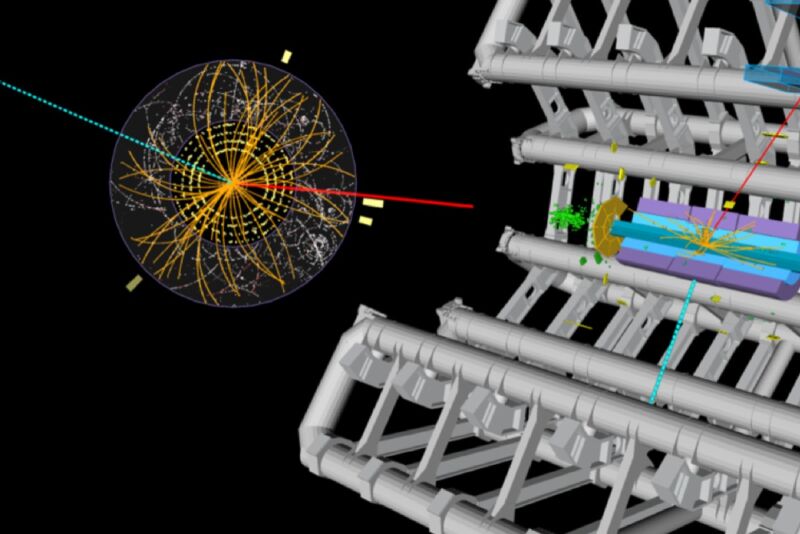Higher W boson mass hints at chinks in Standard Model’s armor

Enlarge / Illustration of a candidate event for a W boson decaying into one muon and one neutrino from proton-proton collisions, recorded by the Large Hadron Collider's ATLAS detector in 2018. (credit: ATLAS Collaboration/CERN)
The Standard Model of Particle Physics has withstood rigorous test after test over many decades, and the discovery of the Higgs boson in 2012 provided the last observational piece of the puzzle. But that hasn't kept physicists from doggedly searching for new physics beyond what the model predicts. In fact, we know the model must be incomplete because it doesn't incorporate gravity or account for the presence of dark matter in the Universe. Nor can it account for the accelerating rate of expansion of the Universe, which many physicists attribute to dark energy.
The latest hint as to how the Standard Model might need revising comes from a new precise measurement of the W boson by Fermilab's CDF II collaboration. That measurement yielded a statistically significant higher mass for the W boson than predicted by the Standard Model-on the order of seven standard deviations, according to the collaboration's new paper published in the journal Science. It also conflicts with prior precision measurements of the W boson's mass.
"The surprisingly high value of the W boson mass reported by the CDF Collaboration directly challenges a fundamental element at the heart of the Standard Model, where both experimental observables and theoretical predictions were thought to have been firmly established and well understood," Claudio Campagnari (University of California, Santa Barbara) and Martijn Mulders (CERN) wrote in an accompanying perspective. "The finding ... offers an exciting new perspective on the present understanding of the most basic structures of matter and forces in the universe."
Read 10 remaining paragraphs | Comments